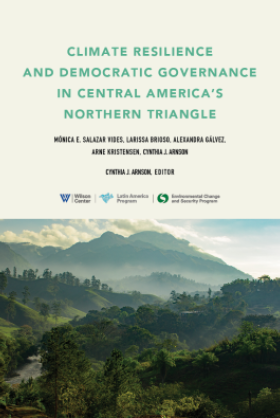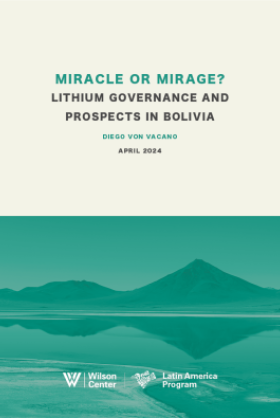Climate Change and Water: Challenges and Responses in Australia and California
Climate change "could be the straw that breaks the camel's back" for California's precarious water system, says W. Michael Hanemann of the University of California, Berkeley. Jon Barnett discusses some of Australia's policy responses to its increasingly dry, variable climate.
Overview
Climate change "could be the straw that breaks the camel's back" for California's precarious water system, said W. Michael Hanemann of the University of California, Berkeley, at an event hosted by the Wilson Center's Environmental Change and Security Program on June 15, 2009. He was joined by Jon Barnett of the University of Melbourne, who discussed some of Australia's policy responses to its increasingly dry, variable climate.
Australian Maladaptations
According to Barnett, Australia has been in an extended drought since 1999, and climate scientists expect it to experience a two-to-seven degree temperature increase by 2100. Higher temperatures and lower rainfall will greatly reduce surface streamflow, which "is what really matters in terms of water," said Barnett.
Furthermore, climate change is likely to increase weather variability, with extreme events like droughts and floods becoming more frequent. "The problems that we're having now are not going to go away," Barnett cautioned. "They're probably going to get worse."
 In response to a hotter, drier, more variable climate, the Australian government has pursued a number of programs Barnett categorized as "maladaptations." He focused on three projects in the drought-afflicted Murray-Darling Basin, a region responsible for 40 percent of the country's agricultural output.
In response to a hotter, drier, more variable climate, the Australian government has pursued a number of programs Barnett categorized as "maladaptations." He focused on three projects in the drought-afflicted Murray-Darling Basin, a region responsible for 40 percent of the country's agricultural output.
First, Canberra's Exceptional Circumstances Policy, an agricultural drought-relief funding program, "doesn't help farmers improve their self-reliance…doesn't help famers improve drought preparedness, and…doesn't help climate-change management," Barnett argued.
Second, the government is "effectively now trading energy for water" by investing in large-scale, expensive, energy-intensive water infrastructure projects—namely, desalination plants and cross-basin transfer pipelines—that will increase greenhouse gas emissions, said Barnett.
Third, Australia's Carbon Pollution Reduction Scheme "doesn't necessarily send the price signals to the heavy-polluting sectors of the economy that it needs to," said Barnett, because it caps the price of carbon permits, lowers fuel taxes, and subsidizes permits for high emitters.
Structural Failures in California
The current U.S. water system "isn't a system in any meaningful way. It's a conglomeration of things that happen. It's fragmented, it's decentralized, it's largely public, [and] it's very parochial," said Hanemann.
In the western United States, "we depend heavily on the snowpack for water," explained Hanemann. Yet as much as 89 percent of the snowpack in California's Sierra Nevada range could disappear by the end of the century, "which means a loss of water supply unless it's replaced by equivalent storage." Poorly defined water rights and inadequate measurements of water use complicate the task of adapting to changing climate patterns, he said.
Correcting Mistakes, Addressing Future Challenges
However, governments can take immediate steps to correct past mistakes and mitigate climate change's future consequences. Barnett endorsed a proposal for Australia to reduce its emissions 25 percent below 2000 levels. In addition, he called for "structural changes in irrigation," and said "demand reduction, recycling, and urban water harvesting could go much, much further and would be much, much cheaper…than pipelines and desal[ination]."
Hanemann stressed that the U.S. government's role must be to "create a record of a [water-use] baseline, and to have clear property rights, in order to allow adaptation to occur." He proposed that a National Water Commission be created to coordinate water management across the United States.
Drafted by Brian I. Klein and edited by Rachel Weisshaar and Meaghan Parker.
Speakers
Hosted By

Environmental Change and Security Program
The Environmental Change and Security Program (ECSP) explores the connections between environmental change, health, and population dynamics and their links to conflict, human insecurity, and foreign policy. Read more
Thank you for your interest in this event. Please send any feedback or questions to our Events staff.








